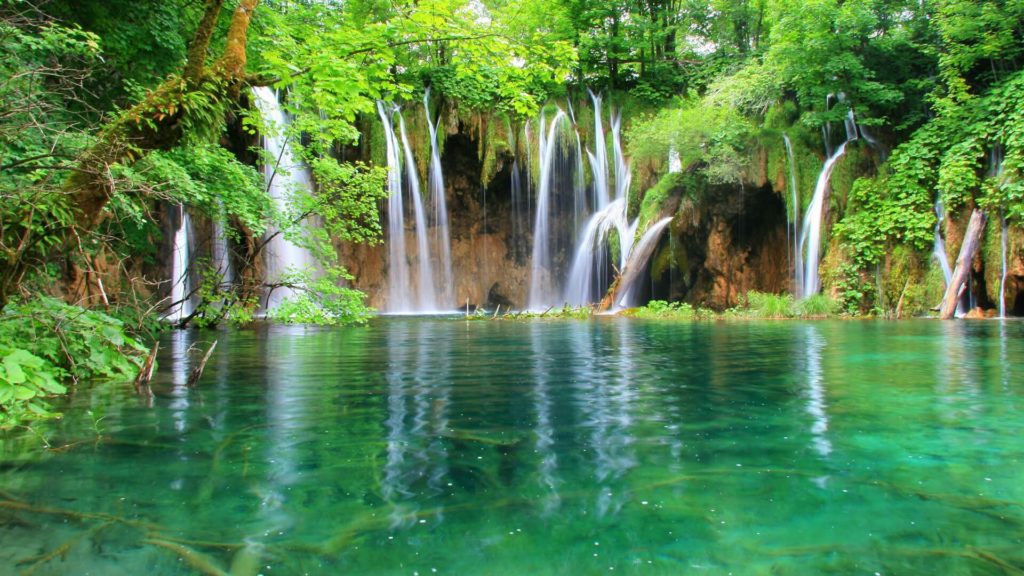The historical antecedents of the struggle of black societies in Cuba have been found since the colonial period, both in the “cofradias”, which were the first associations, instituted by the Catholic Church, white, brown and brown, as in the “cabildos” blacks “, who initially grouped the breed of this breed from Africa. At the end of the Ten Years War, although we may be surprised, it is at the request of the Spanish Government that the “Educational and Recreation Societies of Pardos y Morenos” are created.
Juan Gualberto Gómez, whom our apostle José Martí called: “… my beloved brother, my mulatto brother, my pride …” is the one who is in charge of grouping the cofradías, cabildos and social centers in the “Central Directory of the Societies of Race of Color, “for the struggle for cultural, economic, political and social overcoming of that race against racial prejudice and for the union of all Cubans.
Despite their efforts and the active participation of the blacks in the War of 1895, when the Republic was established, social prejudice continued to be marginalized and “societies” continued to conform to the color of the skin and the economic position of its members. Black societies struggled to achieve equality and eradicate racial discrimination, but only made some improvements. Despite the Constitution of 1901, blacks remained the most despised citizens in the labor sector.
Black societies were no more than the response to discrimination by white social circles that denied them access, but despite having mistakenly adopted a similar operation to white, black associationism acquired very particular functions, its main objective being to contribute to the integration of its members into the nation under construction.
In this way they hoped to move away from the pejorative images commonly applied to dark-skinned people and demonstrate their ability to integrate into civil society. Already since the last decades of the nineteenth century, the criteria of access to certain associations reflected growing inequalities between that population now free.
History of the Club Athens.
The “Athens Club”, without neglecting its undeniable achievements and values, was also a class society, the most exclusive and aristocratic of such institutions for the black race, although it did not exclude certain white people with a proven reputation, such as Don Fernando Ortiz, or those who had marriages with a partner.
In order to organize this institution, a General Meeting was established with its founding partners on September 21, 1917, at the General Lauzá industrial estate, located at Escobar Street No. 78. There, the Board of Directors and its fell to Dr. Pantaleón J. Valdés.
The “Athens Club” was founded on September 25, 1917, with 88 partners, black and mulatto, mostly public employees, but also made up of lawyers, doctors, dentists, engineers, music teachers, journalists and other professions , all belonging to a small and middle black bourgeoisie. Its first president was Aquilino Lombart, being Juan Gualberto Gómez like President of Honor. Over time, a greater number of intellectuals, graduates, and people of greater economic standing would enter. Its headquarters was located in Calle San Miguel Nº 119 (high) in Havana.
In 1925, as President Gerardo Machado, as recorded in the National Archives of Cuba, ceded and transferred in favor of this institution the lot No. 5 of block No. 22, of the grounds of the old Wall, to build the building suitable for the domicile of this Club. In addition, they were awarded fifty thousand pesos for their construction. This and other donations that Machado made to black societies guaranteed him the support of what constituted a powerful political force.
In February of 1927 the work was begun, according to the project of the architect Luis Delfín Valdés, that was finished the 11 of May of 1929. The building was located in the streets Ignacio Agramonte and Apodaca, opening with a reception in which the President of the Republic and celebrating in the evening a great ball for members.
In the “Athens Club” the orchestras were forced by a “Commission of Order” to play foxtrots, waltzes, danzones or boleros, forbidden to play rumbas, sones or mambos, while in “white” societies the music was ” blacks “, generally played by white orchestras and even ending the parties with a street conga.
Independently of this, his activity was meritorious, because in addition to his permanent struggle for racial equality, he performed cultural events, evenings, dances and tributes to prominent figures, such as the one made to the renowned player Orestes Miñoso, for his contribution to the base ball in the Great Leagues, as a member of the “Chicago White Socks”. He also organized trips not only inside Cuba, but also abroad, such as the one made in 1954 to deliver to the then first lady Eleanor Roosevelt a bust of Cuban patriot Antonio Maceo. Nicolás Guillén, who frequented this society, in an act celebrated in memory of Maceo, referred to the assistant of Maceo, Lino Dou, as a universal creole, cult, Mason and ñáñigo.
The disappearance of these societies after 1959 was not accepted by all, proof of this is that after trying to homogenize Cuban society for more than 40 years, there are groups that try to assert their uniqueness, such as the “Confraternity of Negritude” , founded in 1998. Its objective is to focus on the situation of black Cubans because, according to them, “the government has failed to solve the racial problem.” In the last nine years he has celebrated the International Day for the Elimination of Racial Discrimination by organizing spaces for discussion on this issue on the Island.
The Cuban “Cofradia de la Negritud” project questions the government’s international activity on issues related to racism, its acts on various occasions have been closed by the Cuban government. Its current President and founder is Norberto Mesa Carbonell.
HISTORIA DEL “CLUB ATENAS”, ARISTOCRÁTICA SOCIEDAD PARA LA RAZA NEGRA CUBANA.
Los antecedentes históricos de la lucha de las sociedades negras en Cuba los encontramos desde el período colonial, tanto en las “cofradías”, que fueran las primeras asociaciones, instituidas por la iglesia católica, de blancos, morenos y pardos, como en los “cabildos negros”, que inicialmente agruparan a los de esta raza procedentes de África. Terminada la Guerra de los Diez Años, aunque nos pueda sorprender, es a solicitud del Gobierno Español que se crean las “Sociedades de instrucción y Recreo de Pardos y Morenos”.
Juan Gualberto Gómez, a quien nuestro apóstol José Martí, llamara: “…mi hermano querido, mi hermano mulato, mi orgullo…”, es quien se ocupa de agrupar las cofradías, cabildos y centros sociales en el “Directorio Central de las Sociedades de Raza de Color”, para la lucha por la superación cultural, económica, política y social de esa raza frente a los prejuicios raciales y a favor de la unión de todos los cubanos.
..No obstante sus esfuerzos y la activa participación de los negros en la Guerra de 1895, al instaurarse la República aun asi el perjuicio social se les mantuvo marginados y las “sociedades” continuaron conformándose según el color de la piel y la posición económica de sus miembros. Las sociedades negras lucharon por conseguir la igualdad y erradicar la discriminación racial, pero solo obtuvieron algunas mejoras. A pesar de la Constitución de 1901, los negros siguieron siendo los ciudadanos más despreciados en el sector laboral.
Las sociedades negras no fueron más que la respuesta a la discriminación ejercida por los círculos sociales blancos que les negaban su acceso, pero pese a haber adoptado erróneamente un funcionamiento similar al blanco, el asociacionismo negro adquirió unas funciones muy particulares, siendo su principal objetivo contribuir a la integración de sus miembros a la nación en construcción.
De este modo esperaban alejarse de las imágenes peyorativas comúnmente aplicadas a las personas de piel oscura y demostrar su capacidad para integrarse en la sociedad civil. Ya desde las últimas décadas del siglo XIX, los criterios de acceso a ciertas asociaciones reflejaban unas desigualdades crecientes entre esa población ahora libre.
Historia del Club Atenas.
El “Club Atenas”, sin obviar sus innegables logros y valores, fue también una sociedad clasista, la más exclusiva y aristocrática de las instituciones de este tipo para la raza negra, aunque no excluía a ciertas personas blancas de probada reputación, como Don Fernando Ortiz, o los que tuvieran vínculos matrimoniales con algún socio.
Para organizar esta institución se creó una Junta General, con sus socios fundadores, el 21 de Septiembre de 1917, en el domicilio del industrial General Lauzá, sita en la calle Escobar Nº 78. Allí se eligió la Junta Directiva y a su Director, responsabilidad que recayó en el Dr. Pantaleón J. Valdés.
El “Club Atenas” se funda finalmente el 25 de septiembre de 1917, con 88 socios, negros y mulatos, en su mayoría empleados públicos, aunque también lo integraron abogados, médicos, dentistas, ingenieros, profesores de música, periodistas y de otras profesiones, todos pertenecientes a una pequeña y media burguesía negra. Su primer presidente fue Aquilino Lombart, quedando Juan Gualberto Gómez como Presidente de Honor. Con el tiempo ingresarían un mayor número de intelectuales, militares de graduación y personas de mayor posición económica. Su sede estaba situada en la calle San Miguel Nº 119 (altos) en La Habana.
En 1925, siendo presidente Gerardo Machado, según consta en escritura del Archivo nacional de Cuba, se cede y traspasa a favor de esta institución el solar nº 5 de la manzana nº 22, de los terrenos de la antigua Muralla, para que se construyera el edificio adecuado para el domicilio de este Club. Además se les otorgó cincuenta mil pesos para su construcción. Esta y otras donaciones que Machado hizo a sociedades negras, le garantizaban el apoyo de lo que constituía una fuerza política poderosa.
En Febrero de 1927 se comenzó la obra, según el proyecto del arquitecto Luis Delfín Valdés, que fue terminada el 11 de Mayo de 1929. El edificio se encontraba situado en las calles Ignacio Agramonte y Apodaca, inaugurándose con una recepción en la que participó el Presidente de la República y celebrando en la noche un gran baile de gala para los socios.
En el “Club Atenas” las orquestas eran obligadas por una “Comisión de Orden” a tocar foxtrots, valses, danzones o boleros, prohibiéndoseles tocar rumbas, sones o mambos, mientras que en las sociedades “blancas” se bailaba la música “de los negros”, tocada generalmente por orquestas blancas e incluso terminando las fiestas con una conga callejera.
Independiente a esto, su actividad era meritoria, pues además de su permanente lucha por la igualdad racial, realizaba actos culturales, veladas, bailes y homenajes a figuras destacadas, como el realizado al reconocido pelotero Orestes Miñoso, por su aporte al base ball en la Grandes Ligas, como miembro del “Chicago White Socks”. También organizaba viajes no solo dentro de Cuba, sino también al exterior, como el realizado en 1954 para entregar a la entonces primera dama Eleanor Roosevelt un busto del patriota cubano Antonio Maceo. Nicolás Guillén, quien frecuentaba esta sociedad, en un acto celebrado a la memoria de Maceo, se refirió al ayudante de Maceo, Lino Dou, como un criollo universal, culto, masón y ñáñigo.
La desaparición de estas sociedades después de 1959 no fue aceptada por todos, prueba de ello es que después de tratar de homogeneizar la sociedad cubana durante más de 40 años, surgen grupos que tratan de afirmar su singularidad, como la “Cofradía de la Negritud”, fundada en 1998. Su objetivo es centrarse en la situación de los cubanos negros porque, según ellos, “el gobierno no ha conseguido resolver el problema racial”. En los últimos nueve años ha celebrado el Día Internacional de la Eliminación de la Discriminación Racial organizando espacios de discusión sobre esa problemática en la Isla.
El proyecto “Cofradia de la Negritud” cubana cuestiona la actividad internacional del Gobierno en temas relacionados con el racismo, sus actos en ocasiones diversas han sido clausurados por el gobierno cubano. Su Presidente actual y fundador es Norberto Mesa Carbonell.
Agencies/MemoriasCubanas/Derubin Jácome/Internet Photos/Excerpts/Arnoldo Varona/ TheCubanHistory.com
THE CUBAN HISTORY, HOLLYWOOD.










